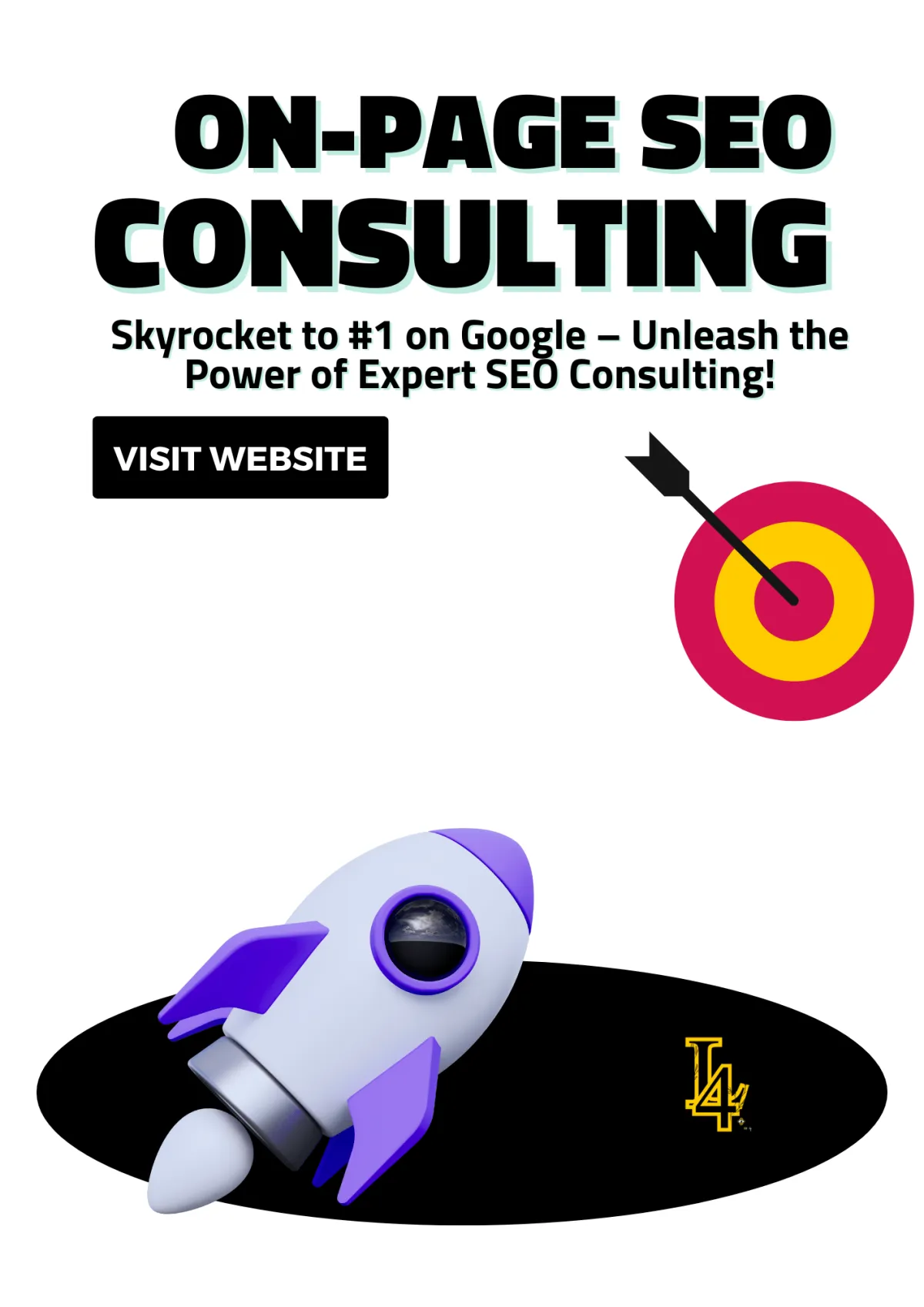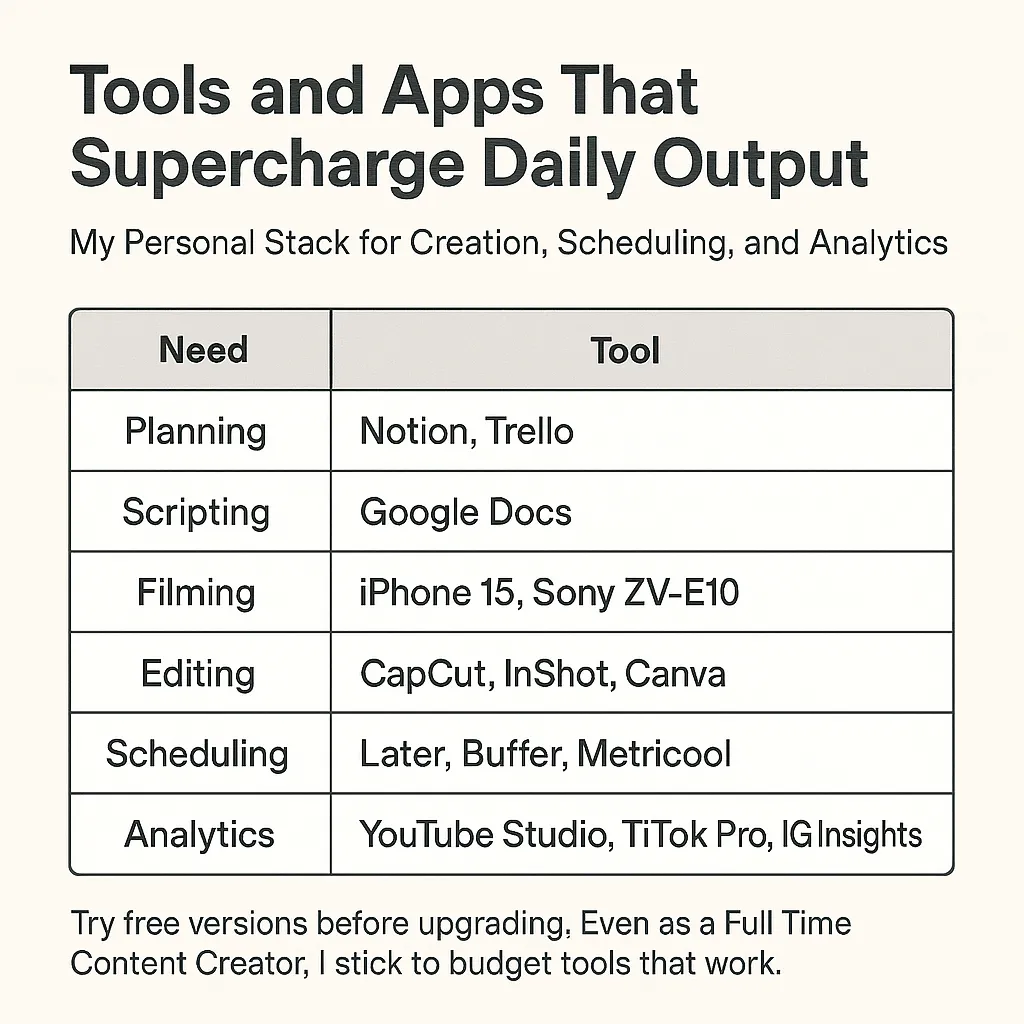
How to Ethically "Steal" Traffic and Visitors from Competitor Websites
Who says you can’t share the pie? Learn how to ethically redirect competitor traffic to your website and grow your audience without crossing any lines!
Table Of Content
How to Ethically Attract Competitor Traffic to Your Website
Identify Your Competitors: How I "Borrowed" Traffic from the Big Dogs (Totally Legal, I Promise)
Step 1: Spotting the Competition
Step 2: Analyzing Their Traffic Like a Pro (Or at Least Trying)
Where Their Traffic Comes From:
Step 3: Targeting Their Keywords (A.K.A. The Traffic Treasure Trove)
Step 4: Writing Better Content (Because, Duh)
How I Made My Content Unbeatable:
Step 5: Borrowing Their Backlinks (Ethically, of Course)
Step 6: Retargeting Ads (A Sneaky Little Hack)
Step 7: Stalking Them on Social Media (The Fun Kind)
Step 8: Keep Tabs on Their Moves
Analyze Competitors’ Traffic Sources: Cracking the Code to Attract Their Audience
Step 1: Break Down Their Traffic Sources
Step 2: My Secret Weapons for Traffic Spying
Step 3: How I Used Their Traffic Insights
1. Target Their Organic Keywords
3. Copy Their Paid Ad Strategy (But Better)
4. Social Media Content Inspiration
Step 4: Example of a Traffic Steal (Totally Legal)
Step 5: Play It Smart, Not Sneaky
Optimize for Competitor Keywords to Ethically Steal Competitors’ Website Traffic
Step 1: Find Competitor Keywords
Step 2: Craft Superior Content
How to Create Superior Content
Step 3: Use Long-Tail Keywords
Examples of Long-Tail Keywords
Step 6: Leverage Retargeting Ads
Create Better Content to Ethically Steal Competitors’ Website Traffic
Step 1: Understand User Intent
Step 2: Add Depth to Your Content
Step 3: Use Visuals to Enhance Engagement
Step 4: Regularly Update Your Content
Step 6: Make Content Shareable
How to Create Shareable Content
Step 7: Benchmark Against Competitors
Target Competitors’ Backlinks to Ethically Steal Their Website Traffic
How to Ethically Target Backlinks
Identify Competitors’ Backlinks
Pitch Your Content to Linking Websites
Offer Guest Posts to Build Backlinks
Monitor and Maintain Backlinks
Why Targeting Competitors’ Backlinks Works
Retarget Visitors and Ethically Steal Competitors’ Website Traffic with Smart Ads
How to Run Effective Retargeting Ads
Why Retargeting Works to Ethically Steal Competitors’ Website Traffic
Leverage Social Media to Ethically Steal Competitors’ Website Traffic
Strategic Social Media Tactics
Pro Tools to Enhance Social Media Tactics
Why Social Media Works to Ethically Steal Competitors’ Website Traffic
Monitor Competitor Performance to Steal Website Traffic Ethically
Pro Tools for Monitoring Competitors
How to Use Competitor Insights
Practical Example: Capturing Traffic from a Competitor’s Drop
Ethical Practices for Monitoring
Ethical Practices to Avoid While Redirecting Competitor Traffic

How to Ethically Attract Competitor Traffic to Your Website
Redirecting traffic from competitors might sound daring, but in digital marketing, it’s about playing smarter, not sneakier. By ethically leveraging insights from competitors, you can attract the same audience while enhancing your brand’s reputation. Here’s a step-by-step guide to ethically analyze competitors, identify opportunities, and redirect their audience to your website.
Part 1
Identify Your Competitors: How I "Borrowed" Traffic from the Big Dogs (Totally Legal, I Promise)
Okay, I’ll admit it. When I first heard about stealing traffic and visitors to competitors’ websites, I thought, “Wait, can I do that without getting busted?” It turns out that you totally can if you play your cards right and keep them ethical. This isn’t about hacking into their site or anything shady. It’s about outsmarting them, and let me tell you, it’s ridiculously fun.
Here’s how I figured out who my competitors were and started swiping, err... borrowing, their traffic.
Step 1: Spotting the Competition
Before you can "steal" anything, you must know who’s sitting on the traffic jackpot. I grabbed my detective hat (okay, it was just my hoodie) and started digging into who’s ranking for the stuff I wanted to rank for. Spoiler alert: They weren’t that hard to find.
The Secret Weapons I Used:
SEMrush: It’s like a spyglass for competitor websites. I could see their rankings, keywords, and even their traffic sources. Talk about juicy intel!
Ahrefs: This baby showed me all their backlinks so I could figure out who’s vouching for them and say, “Hey, would you like to vouch for me instead?”
Google Search: Good ol’ Google never lets you down. I typed in my main keywords, like “best snack subscription boxes,” and jotted down the top-ranking sites. Easy peasy.
Step 2: Analyzing Their Traffic Like a Pro (Or at Least Trying)
Once I knew who my competitors were, it was time to figure out where they were getting their traffic. Think of it like peeking at someone’s homework but then doing your version even better. #Winning
Where Their Traffic Comes From:
Organic Traffic: What keywords are they ranking for? I wanted those!
Referral Traffic: Who’s linking to their site? Could I get those links, too?
Paid Ads: Oh, they’re running Google Ads? Let me see what they’re spending their allowance on.
Social Traffic: Instagram, Facebook, TikTok—wherever they’re hanging out, I’m showing up too.
How I Did It:
SEMrush and Ahrefs did the hard stuff for me. They broke it all down: “Here’s where they’re killing it, and here’s where you can beat them.”
Free tools like SimilarWeb gave me a quick peek at their overall traffic channels, like, “Oh, they’re slaying on Pinterest? Guess where I’m posting next!”
Step 3: Targeting Their Keywords (A.K.A. The Traffic Treasure Trove)
Once I saw their top-performing keywords, I thought, “Why not aim for those too?” It’s like your friend finding the best slice of pizza in town—you just go there and order the same thing but with extra toppings.
What I Did:
Found their keywords using Ahrefs and SEMrush.
Checked out their top-ranking content and thought, “Okay, but what if I make this even cooler?”
Created better articles, added killer visuals, and made sure I hit all the questions people were asking.
Example: A competitor had a post on “Best Protein Bars.” I wrote one called “The 10 Best Protein Bars (Tried and Tasted by a Real Person Who Loves Snacks)” and included a video of me trying each one. Guess which article got more clicks?
Step 4: Writing Better Content (Because, Duh)
Here’s the deal: The easiest way to swipe traffic is by writing stuff that’s way better than what’s already out there. I’m talking more info, cooler graphics, and answers to every question your audience has.
How I Made My Content Unbeatable:
More Depth: If their article was 500 words, mine was 1,000. If they gave three tips, I gave 10. Overachieving pays off.
Better Visuals: I added memes, videos, and charts because who doesn’t love pictures?
Fresh Updates: I made sure my stuff wasn’t outdated. Nobody wants to read “Top Trends of 2019” in 2025.
Step 5: Borrowing Their Backlinks (Ethically, of Course)
Backlinks are like high fives from other websites. The more you have, the cooler you look to Google. So, I started looking at who was high-fiving my competitors and asked them to high-five me, too.
How I Did It:
Used Ahrefs’ backlink tool to see who was linking to my competitors.
Sent emails like, “Hey, I saw you linked to [Competitor’s Article], but I’ve got an updated version with even more info. Wanna link to mine instead?”
Pro Tip: Don’t sound desperate or pushy. Just be chill and let them know why your content rocks.
Step 6: Retargeting Ads (A Sneaky Little Hack)
Ever visited a website, and then suddenly their ads are everywhere you go? Yeah, that’s retargeting, and it’s genius. I used it to steal back visitors who checked out my competitor’s site but didn’t stick around.
My Retargeting Game Plan:
Used Google Ads to target people interested in competitor keywords.
Ran Facebook and Instagram ads saying, “Looking for something better than [Competitor]? Check this out!”
Example: If someone visited a competitor selling “budget travel gear,” they saw my ad for “affordable travel gear that lasts.”
Step 7: Stalking Them on Social Media (The Fun Kind)
Social media is where your competitors are hanging out, talking to their audience, and probably stealing a few of your potential customers. Time to flip the script.
How I Worked the Social Game:
Followed their followers and started engaging with them. (Hello, new friends!)
Commented on their posts with helpful advice (and maybe a link to my stuff—oops).
Ran ads targeting their audience. It’s like, “Hey, I see you’re into [Competitor]. Wanna check out something cooler?”
Step 8: Keep Tabs on Their Moves
This part is like being Sherlock Holmes. Keep an eye on what your competitors are doing so you can react faster than they can say, “Wait, what happened to our traffic?”
How I Stayed Ahead:
Set up Google Alerts for their brand name, so I knew when they launched something new.
Used SEMrush’s position tracker to see if they were gaining or losing rankings.
Watched their social media for clues on what was working for them.

Part 2
Analyze Competitors’ Traffic Sources: Cracking the Code to Attract Their Audience
Here’s how I decoded their strategies and turned their audience into mine—ethically, of course.
Step 1: Break Down Their Traffic Sources
First, I needed to figure out where their traffic was coming from. It’s like asking, “Who’s sending all these party guests to their house, and how can I send them to mine instead?” Competitor traffic generally falls into four categories:
Organic Traffic:
This is the holy grail of free traffic. If they’re ranking high on Google, I wanted to know exactly which keywords were doing the heavy lifting. Spoiler: These keywords became my new best friends.
Referral Traffic:
Sometimes, other websites point visitors to your competitors. It’s like your neighbor saying, “Oh, their party’s way cooler.” I was determined to convince those neighbors to recommend my party instead.
Paid Traffic:
Are competitors running ads? Perfect. I wanted to know which keywords they were bidding on and which platforms were raking in the most clicks.
Social Traffic:
If their Instagram or TikTok was popping off, you bet I was going to find out what kind of content was getting all the love. Social platforms can be goldmines for attracting engaged visitors.
Step 2: My Secret Weapons for Traffic Spying
To peek into competitors’ traffic sources, I used tools that felt like x-ray glasses for websites. Here’s what worked:
SEMrush Traffic Analytics: This tool gave me a full breakdown of their traffic channels—organic, referral, paid, and social. It even showed me the traffic percentage for each category.
Ahrefs’ Site Explorer: Perfect for seeing backlinks and which pages on their site were getting the most love. It’s like discovering their most popular songs on Spotify and making a remix.
SpyFu: Want to know what ads your competitors are running? SpyFu lets you see their Google Ads strategy and even how much they’re spending.
SimilarWeb: A great free tool for getting a general sense of where their traffic comes from.
Step 3: How I Used Their Traffic Insights
Knowing where their traffic came from was just step one. The fun part was figuring out how to use that intel to attract those same visitors. Here’s what I did:
1. Target Their Organic Keywords
I used SEMrush and Ahrefs to find their top-ranking keywords. If they were ranking for “best eco-friendly water bottles,” I wrote a blog post titled “Top 10 Eco-Friendly Water Bottles (That Actually Work).” My goal? To be more helpful, detailed, and engaging than their content.
Pro Tip: Long-tail keywords are easier to rank for, so I went after terms like “best water bottles for hiking under $50.”
2. Chase Their Backlinks
If their traffic came from backlinks, I wanted those links too. Ahrefs showed me which sites were linking to them, and I reached out to those sites with something better to offer.
How I Pitched It:
“Hey, I saw you linked to [Competitor’s Article], and I just published an updated version with more examples and visuals. Would you consider linking to mine instead?”
Spoiler: It worked.
3. Copy Their Paid Ad Strategy (But Better)
SpyFu showed me their top-performing ads, including the keywords they bid on and the ad copy they used. I took inspiration but made my ads more compelling.
Example: If their ad said, “Affordable Hosting for Small Businesses,” mine said, “Lightning-Fast Hosting for Small Businesses (Without the Headaches).”
4. Social Media Content Inspiration
By checking their Instagram, Facebook, and TikTok, I figured out what their audience loved. Then, I created similar (but even cooler) posts.
Example: If they were getting tons of likes on fitness tips, I made short, funny workout videos and shared them with a call-to-action leading to my website.
Step 4: Example of a Traffic Steal (Totally Legal)
Let’s say my competitor was crushing it with the keyword “top fitness gear.” They had a blog post about it that was getting loads of clicks. Here’s what I did:
Analyzed Their Content: Their post listed 10 products, but it lacked detailed reviews.
Created Something Better: I wrote a new post with 15 products, full reviews, and videos of each one in action.
Promoted It Like Crazy: I shared it on social media, reached out to fitness bloggers for backlinks, and even ran a few targeted ads.
Result? My article started climbing the rankings, and before long, I was getting a chunk of their traffic. Boom.
Step 5: Play It Smart, Not Sneaky
Here’s the thing: “Stealing traffic” sounds sneaky, but it’s just smart marketing. You’re not sabotaging anyone—you’re simply learning from the competition and doing it better.
What I Avoided:
Copying their content word-for-word (that’s a big no-no).
Over-promising in ads just to get clicks.
Using shady tactics to get backlinks (Google’s smarter than that).

Part 3
Optimize for Competitor Keywords to Ethically Steal Competitors’ Website Traffic
Let’s cut to the chase—your competitors’ traffic can be yours, too, if you play your cards right. Learning to ethically steal competitors’ website traffic is all about leveraging their strategies and improving on them. By optimizing for their keywords and crafting superior content, you can attract their audience while staying completely above board.
Step 1: Find Competitor Keywords
The first step to ethically steal competitors’ website traffic is knowing what keywords bring visitors to their site. If they’re ranking for high-performing terms, those are your golden targets.
Tools to Use
Ahrefs: Use the Organic Keywords Report to uncover which terms are driving their traffic.
SEMrush: Analyze their keyword rankings and estimated traffic per term.
Google Search: Simply type in your niche keywords and note who shows up consistently.
Pro Tip: Focus on keywords with high traffic potential and relatively low competition for easier wins. For example, instead of competing for “best shoes,” target “best running shoes under $100.”
Step 2: Craft Superior Content
Once you’ve identified the keywords, it’s time to outperform your competitors. Content is king, and better content will naturally attract more clicks.
How to Create Superior Content
Add More Depth: If their article covers five tips, write about ten, and include examples or case studies.
Enhance Visual Appeal: Use infographics, videos, or animations to make your page more engaging.
Stay Current: Update content frequently with fresh stats and trends.
Example: If your competitor ranks for "best productivity apps," write “Top 15 Productivity Apps in 2025 (Ranked by Real Users)” and include comparison tables, user reviews, and downloadable resources.
Step 3: Use Long-Tail Keywords
Sometimes, competing for the same keywords can feel like climbing Everest. That’s where long-tail keywords come in handy. They have lower competition and higher conversion potential, making them perfect for ethically stealing competitors’ website traffic.
Examples of Long-Tail Keywords
Instead of “best project management tools,” try “best project management tools for small teams.”
Instead of “SEO tips,” go for “easy SEO tips for small business owners.”
By targeting these niche phrases, you can tap into underserved segments of your competitors’ audience.
Step 4: Analyze Keyword Gaps
Ethically stealing competitors’ website traffic also means finding what they missed. Keyword gap analysis is a powerful way to discover opportunities they’ve overlooked.
How to Do It
Use Ahrefs Content Gap Tool to see which keywords your competitors rank for but you don’t.
Look for high-potential keywords with moderate difficulty scores.
Fill the gap by creating content that bridges these topics.
Example: If a competitor ranks for “affordable graphic design tools” but doesn’t mention Canva’s new features, you can swoop in with an updated article featuring those tools.
Step 5: Optimize Everything
Now that you’ve created stellar content targeting competitor keywords, make sure it’s optimized to its fullest potential. This ensures Google recognizes your content as relevant and valuable.
Optimization Checklist
Title Tags: Include your main keyword naturally, like “10 Best SEO Tools to Ethically Steal Competitors’ Website Traffic.”
Meta Descriptions: Write enticing summaries with target keywords.
Headers and Subheaders: Use variations of your keywords, like “How to Ethically Steal Competitors’ Website Traffic with Long-Tail Keywords.”
Internal Linking: Link to related articles on your site to boost authority.
Step 6: Leverage Retargeting Ads
If a competitor’s visitors don’t convert on their site, retargeting ads give you another shot at capturing them. By targeting audiences who engage with similar content, you can ethically redirect their attention to your offerings.
How to Run Retargeting Ads
Use Google Ads Display Network or Facebook Ads to create targeted campaigns.
Highlight what makes your content or services better than competitors’.
Include calls to action like “Get the Best SEO Tips Today!”
Step 7: Monitor and Iterate
Ethically stealing competitors’ website traffic isn’t a one-and-done deal. Monitor your progress and refine your strategy over time.
Tools to Track Performance
Google Analytics: Measure traffic to your newly optimized pages.
SEMrush: Keep tabs on keyword rankings.
Ahrefs: Check if you’re earning backlinks and visibility.
Pro Tip: Regularly revisit competitors’ keywords and adjust your content to stay ahead of the curve.

Part 4
Create Better Content to Ethically Steal Competitors’ Website Traffic
When it comes to ethically stealing competitors’ website traffic, content is your secret weapon. Think of it like this: if you create a bigger, juicier burger, the customers are bound to come to your table. By crafting content that’s richer, more engaging, and more helpful than your competitors, you’ll naturally attract their audience—no shady tactics needed.
Step 1: Understand User Intent
To ethically steal competitors’ website traffic, you need to focus on what the audience is really searching for. User intent is the “why” behind the search. Are they looking for quick answers, in-depth guides, or actionable advice? Nail this, and you’re halfway there.
How to Address User Intent
Analyze competitors’ content and identify gaps—what questions are they leaving unanswered?
Use tools like AnswerThePublic or Google’s People Also Ask to discover related queries.
Structure your content to directly answer these questions while adding extra value.
Example: If your competitor’s post on "home workout equipment" lists basic items, expand on it by categorizing gear by budget, space needs, and fitness goals.
Step 2: Add Depth to Your Content
Nobody likes shallow content. To ethically steal competitors’ website traffic, dive deeper than they do. Be the encyclopedia where your competitor is a pamphlet.
Ways to Add Depth
Research and Data: Include original research or use trusted sources to back up your points.
Case Studies: Share real-life examples that demonstrate the effectiveness of your advice.
Expert Opinions: Collaborate with industry leaders to add credibility and unique insights.
Example: If your competitor lists "5 tips for remote work," create an article with "15 actionable tips" and include data on productivity tools or interviews with remote work experts.
Step 3: Use Visuals to Enhance Engagement
A wall of text can be intimidating. To ethically steal competitors’ website traffic, spice up your content with visuals that keep readers engaged and scrolling.
Visual Content Ideas
Infographics: Summarize complex ideas into easy-to-digest visuals.
Videos: Create tutorials or demonstrations to complement your written content.
Interactive Tools: Add quizzes, calculators, or clickable charts to engage users.
Pro Tip: Tools like Canva and Venngage make creating professional visuals simple, even if you’re not a design wizard.
Step 4: Regularly Update Your Content
One of the easiest ways to ethically steal competitors’ website traffic is to keep your content fresh. Search engines love updated content, and so do users.
How to Keep Content Fresh
Add new data or examples to evergreen posts.
Monitor competitors’ updates and ensure your content stays one step ahead.
Re-optimize your articles for emerging trends or new keywords.
Example: If a competitor’s "best 2023 gadgets" post hasn’t been updated, refresh your own version to include "the best gadgets of 2025" and highlight new innovations.
Step 5: Optimize for SEO

Great content is useless if no one sees it. To ethically steal competitors’ website traffic, make sure your content is optimized for search engines.
SEO Optimization Tips
Target Competitor Keywords: Use tools like Ahrefs or SEMrush to identify the terms they’re ranking for.
Internal Linking: Link to related articles within your site to boost page authority.
Structured Data: Use headings, subheadings, and bullet points to make content easy to skim.
Pro Tip: Focus on long-tail keywords that capture niche audiences. For example, instead of “home workout equipment,” target “best compact workout equipment for small apartments.”
Step 6: Make Content Shareable
Social media is a great way to ethically steal competitors’ website traffic. By making your content highly shareable, you can amplify its reach and attract a wider audience.
How to Create Shareable Content
Write catchy headlines that spark curiosity.
Include click-worthy images and videos.
Add social sharing buttons and CTAs like “Share this with a friend who loves fitness!”
Step 7: Benchmark Against Competitors
To ethically steal competitors’ website traffic, you need to constantly benchmark your content against theirs. The goal is to identify weaknesses in their approach and outperform them.
How to Benchmark Content
Use BuzzSumo to find their most-shared articles and analyze what made them popular.
Study their formatting—are they missing visuals, CTAs, or keywords you can capitalize on?
Regularly monitor their updates and adjust your strategy accordingly.
Example: If a competitor’s article on "best SEO tools" lacks user reviews, add testimonials and comparison tables to your own post.
Part 5
Target Competitors’ Backlinks to Ethically Steal Their Website Traffic
Backlinks are like golden tickets in the world of SEO, and your competitors’ backlinks can help you secure high-quality referral traffic for your site. The trick? Ethically leveraging those existing links to position your content as an even better resource.
How to Ethically Target Backlinks
Identify Competitors’ Backlinks
To ethically steal competitors’ website traffic through backlinks, start by identifying the sites linking to them.
Use Tools Like:
Ahrefs Backlink Checker: Uncover who’s linking to your competitors and their most valuable backlinks.
SEMrush Backlink Analytics: Find linking domains and analyze the strength of their links.
Pro Tip: Focus on high-authority domains that align with your industry or niche. These are the backlinks worth chasing.
Analyze the Linking Content
Once you’ve identified potential backlinks, study the content on both ends—the competitor’s page and the linking page.
Look for content gaps or ways your resource could add more value.
Check for outdated information, broken links, or opportunities to provide fresh insights.
Example: If a fitness blog links to your competitor’s article on “Top 10 Home Gym Equipment,” but their list lacks updated products, create a new guide with current recommendations and additional details like pricing or reviews.
Pitch Your Content to Linking Websites
Now it’s time to make your move. Reach out to the websites linking to your competitors with a compelling pitch.
Highlight how your content provides more value, whether it’s updated information, enhanced visuals, or expanded coverage.
Be polite, professional, and to the point—no one likes a pushy email.
Email Template Example:
Subject: Enhance Your Article with Our Updated Guide
Hi [Name],
I noticed you linked to [Competitor’s Article] in your post “[Title of Their Post].” While it’s a great resource, I recently created an updated guide that includes [specific added value, e.g., “the latest home gym equipment for 2025”].
Here’s the link: [Your URL]
I’d love for you to check it out and consider including it in your article to provide your readers with even more value!
Thanks for your time,
[Your Name]
Offer Guest Posts to Build Backlinks
If the websites linking to your competitors accept guest posts, take advantage of the opportunity. Pitch them ideas for original, high-value content that links back to your site.
Example: If a health blog links to your competitor, propose a guest post titled “The Science Behind Effective Home Workouts,” featuring a link to your guide.
Monitor and Maintain Backlinks
Once you’ve secured backlinks, keep an eye on their performance using tools like Google Search Console or Ahrefs.
Track traffic from referral links.
Ensure your backlinks remain active and don’t get replaced by competitors.
Pro Tip: Build relationships with these websites for future collaboration. A strong partnership can lead to more backlinks down the line.
Why Targeting Competitors’ Backlinks Works
Leverages Existing Trust: Sites already linking to your competitors are more likely to link to you if you offer something better.
Boosts SEO: High-quality backlinks signal authority to search engines, improving your rankings.
Drives Referral Traffic: Links from relevant, high-traffic sites can bring engaged visitors to your page.
Part 6
Retarget Visitors and Ethically Steal Competitors’ Website Traffic with Smart Ads
Even if potential customers visit your competitor’s site first, all is not lost! Retargeting ads allow you to re-engage those visitors and draw them back to your website. By crafting strategic and enticing ads, you can showcase your unique value and ethically redirect traffic.
How to Run Effective Retargeting Ads
Set Up Retargeting Campaigns
Start by setting up retargeting campaigns on platforms like Google Ads or Facebook Ads. These tools let you display ads to users who’ve shown interest in your competitors or similar services.
Google Ads Display Network: Targets users across millions of websites and apps.
Facebook Pixel: Tracks visitors and enables targeted ads on Facebook and Instagram.
Pro Tip: Use audience targeting features to refine your reach based on user behavior and demographics.
Highlight Your Competitive Advantages
Retargeting ads are your chance to shine by emphasizing what makes you better than the competition.
Craft a Compelling Message:
Focus on speed, quality, affordability, or exclusive features.
Use clear calls-to-action (CTAs) like “Switch Today” or “Learn More.”
Example: If your competitor promotes “affordable hosting,” your ad could say:
“Why Settle? Get Fast, Affordable Hosting with 24/7 Support. Switch Today!”
Leverage Eye-Catching Visuals
Your ad’s design matters just as much as the message. Use professional, attention-grabbing visuals to stand out.
Incorporate your brand colors and logo for recognition.
Use engaging images or animations to draw users in.
Example: Show a side-by-side comparison of features or benefits, such as load times or support hours, to visually emphasize your advantage.
Use Specific Offers to Tempt Visitors
Create irresistible offers to lure users back to your site.
Discounts: “20% Off for New Customers!”
Free Trials: “Try Our Hosting Risk-Free for 30 Days.”
Bonuses: “Sign Up Now and Get a Free Domain!”
Pro Tip: Include urgency-driven language like “Limited Time Offer” or “Ends Soon” to encourage action.
Monitor and Optimize Your Campaigns
Retargeting is not a “set it and forget it” strategy. Regularly monitor your ads’ performance and adjust for better results.
Track Metrics:
Click-through rates (CTR)
Conversion rates
Cost-per-click (CPC)
Optimize Ads:
Test different headlines, visuals, and CTAs.
Refine your audience targeting based on engagement data.
Example: If one ad outperforms others, analyze why and apply those insights to future campaigns.
Why Retargeting Works to Ethically Steal Competitors’ Website Traffic
Keeps You Top of Mind: Retargeting ensures your brand stays visible even after users leave your competitors’ site.
Re-engages Interested Users: Visitors already exploring your niche are more likely to convert with the right nudge.
Maximizes ROI: Retargeted users are more likely to click and convert, making your ad spend highly effective.
Part 7
Leverage Social Media to Ethically Steal Competitors’ Website Traffic
Social media isn’t just for selfies and cat videos—it’s a goldmine for reaching your competitor’s audience. By using the right strategies, you can engage their followers and ethically redirect traffic to your website. Here’s how to make the most of social media platforms to grow your online presence.
Strategic Social Media Tactics
Engage with Competitors’ Followers Your competitors’ followers are already interested in your niche. Start by building connections and showing your value.
Follow and Interact: Follow their followers and engage with their posts by liking, commenting, and sharing relevant content.
DM with Value: Send direct messages with useful tips, resources, or links to your own content.
Example: If your competitor sells fitness gear, comment on their followers’ workout posts with encouragement or helpful suggestions like,
“Great form! If you’re looking for tips on home workouts, check out our guide [link].”
Showcase Expertise in Comments Thoughtful comments on your competitor’s posts can position you as a credible alternative.
Avoid Spam: Don’t just drop links—add value to the conversation.
Use Humor and Expertise: Make your comments engaging and helpful to attract attention.
Example: On a competitor’s post about meal-prepping, you could comment,
“Love this idea! We just published a blog on quick, healthy recipes for busy days—perfect for meal prep enthusiasts. Check it out!”
Run Targeted Ads to Competitor Audiences Social media ads allow you to reach the exact audience you want—sometimes even your competitors’ followers.
Facebook Ads Manager: Use “Detailed Targeting” to select interests or followings related to your competitors.
Instagram Sponsored Posts: Focus on visually appealing, high-quality ads that highlight your unique value.
Pro Tip: Include offers in your ads, like discounts or free resources, to entice users.
Example Ad Copy:“Looking for better deals on fitness gear? Check out our latest collection with 20% off!”
Create Shareable Content The more your content is shared, the more visibility you’ll gain with your competitor’s audience.
Focus on Visuals: Use infographics, videos, or memes that resonate with your target audience.
Encourage Sharing: Add CTAs like, “Tag a friend who needs this!” or “Share if this helped you!”
Example: Post a humorous yet helpful infographic comparing your services to your competitor’s, emphasizing your strengths.
Pro Tools to Enhance Social Media Tactics
Hootsuite or Sprout Social
Track your competitors’ engagement rates, popular posts, and follower growth.
Schedule posts to maintain a consistent presence.
BuzzSumo
Identify top-performing content in your niche for inspiration.
Find trending topics your competitors haven’t covered yet.
Canva
Design eye-catching social media graphics that stand out from your competitors’ posts.
Why Social Media Works to Ethically Steal Competitors’ Website Traffic
Direct Access to Target Audiences: Engaging with followers already interested in your niche ensures quality leads.
Increased Brand Visibility: Social interactions put your brand in front of potential customers without being pushy.
Cost-Effective Advertising: Ads targeting your competitor’s audience have a high likelihood of conversion.

Part8
Monitor Competitor Performance to Steal Website Traffic Ethically
Keeping tabs on your competitors isn’t just smart—it’s essential. By understanding their strategies and identifying their weaknesses, you can adapt quickly and redirect traffic to your site. Monitoring competitor performance ensures you stay one step ahead in the digital race.
Why Monitoring Matters
Competitors’ activities provide valuable insights into market trends, user preferences, and potential gaps in their strategies. By staying informed, you can:
Seize Traffic Opportunities: Capitalize on competitors’ lapses, like outdated content or broken links.
Refine Your Strategy: Learn what works (or doesn’t) for them and apply it to your site.
Pro Tools for Monitoring Competitors
Google Alerts
What It Does: Tracks mentions of your competitors’ brand names, products, or services.
How to Use It: Set up alerts for terms like “Competitor Name blog” or “Competitor Name reviews.” You’ll receive updates whenever they’re mentioned online.
SEMrush Position Tracking
What It Does: Monitors your competitors’ keyword rankings and traffic performance.
How to Use It: Add their URLs and track shared keywords. Watch for dips in their rankings as opportunities to optimize your own content.
Sprout Social or Hootsuite
What They Do: Analyze competitors’ social media metrics, including follower growth, post engagement, and audience sentiment.
How to Use Them: Identify their most engaging posts and replicate successful tactics with your own spin.
How to Use Competitor Insights
Identify Traffic Drops When competitors lose traffic, it’s your chance to fill the void.
Example: If a competitor ranks poorly for a keyword due to outdated content, update your version with fresh statistics and actionable tips.
Pro Tip: Use Ahrefs to find competing pages with declining traffic and target their keywords.
Spot Gaps in Their Strategy Keep an eye out for opportunities they’ve missed, like trending topics or emerging platforms.
Example: If they’re not active on a platform popular with your audience (like TikTok), establish your presence there to capture attention.
Track Content Trends Watch what types of content perform best for your competitors and adapt them for your audience.
Example: If their video tutorials gain traction, consider creating your own video series with added depth or unique perspectives.
Practical Example: Capturing Traffic from a Competitor’s Drop
A competitor’s rankings for “best email marketing tools” drop after Google flags their site for slow load times. Use this opportunity to:
Optimize Your Content: Ensure your page is mobile-friendly and lightning-fast.
Expand Your Reach: Use social media ads targeting “email marketing” audiences to attract their visitors.
Update and Promote: Refresh your guide with the latest tools, integrations, and pricing options.
Ethical Practices for Monitoring
While monitoring is essential, always keep it ethical:
Avoid Overstepping: Focus on outperforming, not copying.
Build Better Content: Use insights to improve your content and user experience.
Part 9
Ethical Practices to Avoid While Redirecting Competitor Traffic
Redirecting competitor traffic can be a brilliant strategy, but it’s crucial to maintain ethical standards. Crossing the line not only damages your reputation but can also lead to penalties from search engines or platforms. Here's how to stay above board while ethically stealing competitors’ website traffic.
What to Avoid
Copying Content Outright
Why It’s Unethical: Directly duplicating a competitor’s content violates copyright laws and hurts your credibility.
Better Approach: Use competitor content as inspiration, but always craft original, value-driven material that’s tailored to your audience.
Spamming Backlinks
Why It’s Harmful: Attempting to sabotage a competitor’s SEO by spamming their backlinks with poor-quality links can result in penalties for both parties.
Better Approach: Focus on building high-quality backlinks for your own site through guest posts, partnerships, and creating shareable resources.
Using Bots
Why It’s Risky: Inflating competitor traffic metrics with bots may temporarily skew their analytics, but it offers no long-term benefit and could lead to platform bans.
Better Approach: Invest time in ethical methods like targeting their keywords or improving your content to attract real users.
Focus on Ethical Strategies
Craft Unique, Value-Driven Content
Why It Works: People are drawn to content that solves their problems or answers their questions better than anyone else.
Example: If a competitor writes a basic guide on “email marketing,” create a more comprehensive article with expert insights, case studies, and actionable steps.
Engage Positively with Their Audience
Why It Works: Engaging with your competitors’ audience builds trust and redirects attention to your brand.
Tactics to Try:
Comment on their posts with helpful insights (but avoid self-promotion).
Join relevant discussions in forums or groups where their audience gathers.
Offer Genuine Solutions
Why It Works: Offering something better—whether it’s pricing, features, or usability—positions your brand as a superior choice.
Example: If a competitor’s product lacks customer support, highlight your 24/7 live chat feature in ads targeting their audience.
Pro Tip: Stay True to Your Brand
While it’s tempting to mimic your competitors’ strategies, focus on amplifying your unique strengths. Authenticity resonates with users and fosters long-term loyalty.
Conclusion
Ethically attracting competitor traffic to your website is about strategy, not shortcuts. By understanding your competitors, creating superior content, and leveraging tools like keyword targeting and retargeting ads, you can build trust, provide value, and naturally draw their audience to your platform. The key is to focus on authenticity and user satisfaction—because when you prioritize what’s best for your audience, success follows. So, play it smart, stay ethical, and watch your traffic soar!


















